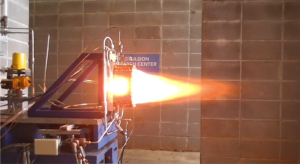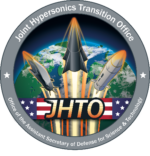
Dr. Gabriel Xu, an expert in experimental plasma science, in-space electric propulsion and rotating detonation engines, is leading a University of Alabama in Huntsville (UAH) research team exploring a solid-fuel rotating detonation ramjet technology. The study combines the two technologies of solid fuel ramjets and rotating detonation engines to provide high-efficiency, air-breathing propulsion using high-density fuel. Uniting these two concepts can improve the range of supersonic and hypersonic aircraft and missile systems.
Awarded in 2021 by the Department of Defense through the University Consortium for Applied Hypersonics, a Texas A&M Engineering Experiment Station administered consortium, the $1.5 million, three-year project is led by the UAH team who is conducting the experimental portions of the project, while the industry partner CFD Research Corporation (CFDRC) is conducting the computational modeling portion.
The study has been divided into three key areas: rotating detonation engine injector development, solid-fuel development, and integration and test. Through these stages, the team at UAH can pinpoint which injector designs and fuel formations perform best. At the same time, the CFDRC team can evaluate and bridge gaps in the experimental data to provide a clearer understanding of the physics behind their models.
The use of solid fuels in rotating detonation engines presents new challenges. One challenge is creating a fuel formulation that can provide combustible fuel at ramjet temperature. A second challenge is the possibility that large particles characteristic of solid-fuel types may clog the fuel injectors. A third challenge is how does the presence of multi-phase mixture affect the detonation behavior.
The potential use of solid fuel requires modification of existing engine concepts. Customized components are being developed alongside the solid fuel research to successfully combine both the rotating detonation engine and solid-fuel technology. Creating each component separately allows for a more efficient analysis of the integrated design within each stage.
Findings from this research will offer a basis for how this technology can be applied to missile systems as well as supersonic and hypersonic aircraft to enable more efficient air-breathing propulsion.


